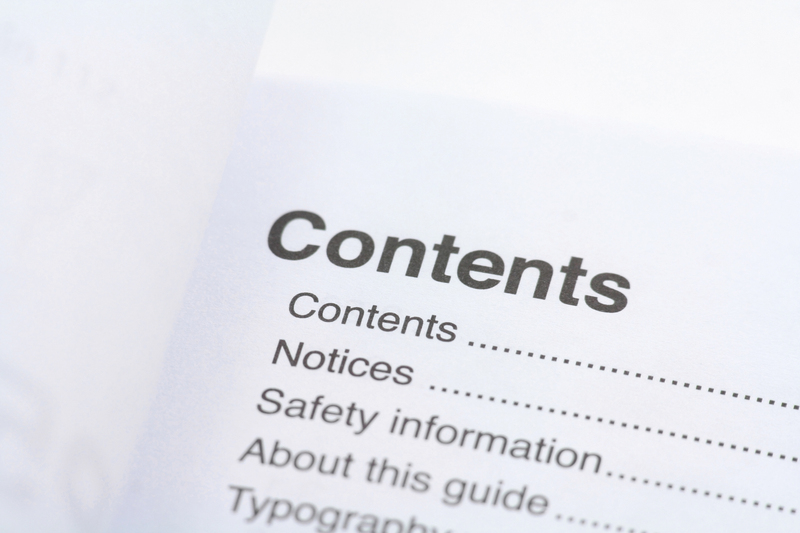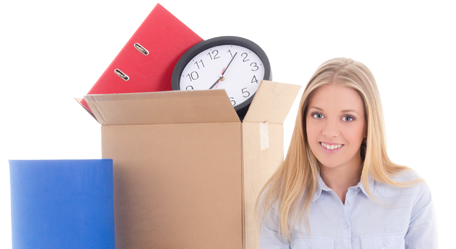Hitting the Right Note: Professional Piano Moving Explained
Posted on 24/05/2025
Hitting the Right Note: Professional Piano Moving Explained
Pianos are not only magnificent musical instruments but also intricate marvels of engineering and artistry. Their sheer size, weight, and delicacy make them one of the most challenging household items to transport. If you've ever considered moving a piano--or even just rearranging it in your living room--you're likely aware that it's not a DIY job. In this comprehensive guide, we will unlock the complexities of professional piano moving, offering advice, insights, and practical tips to safeguard your treasured instrument.
Why Professional Piano Movers Are Essential
Moving a piano is not just about lifting and transporting; it's a process that requires precision, expertise, and specialized tools. When you hire professional piano movers, you're ensuring the safety of both your piano and your property. Let's explore the reasons why specialists are vital for handling this task:
- Preventing Damage to the Piano: With over 12,000 moving parts, pianos are intricate and easily damaged if not handled properly.
- Protecting Walls and Floors: The sheer weight (ranging from 300 to 1,200 pounds!) poses a risk to flooring, doorways, and walls during transit.
- Health and Safety: Avoiding injuries to yourself and helpers, as improper lifting can easily result in strains or worse.
- Insurance and Accountability: Professional movers carry insurance, offering peace of mind and protection against accidental damage.
Types of Pianos and Their Moving Challenges
Every piano variation poses unique challenges when it comes to transportation. Understanding these can help you appreciate why expert piano movers use tailor-made approaches for different instruments:
- Upright Pianos: Although their rectangular shape makes them less awkward than grands, upright pianos are still extremely heavy and require careful handling, especially when navigating stairs or narrow spaces.
- Grand and Baby Grand Pianos: These instruments are known for their elegant curves and sprawling size, making them particularly tricky. Professional movers typically disassemble parts, such as the legs and pedals, to transport them safely.
- Digital Pianos: While lighter, digital pianos can have sensitive electronic components that need gentle handling and protection from vibrations.

The Professional Piano Moving Process Explained
How do professional piano movers ensure a seamless and damage-free move? Here's a comprehensive look at the process:
Assessment and Planning
Experienced piano movers start with a thorough assessment. This initial stage usually involves:
- Measuring Doorways and Pathways: Ensuring that the instrument can fit through all access points without damage.
- Understanding Stairs and Tight Spaces: Evaluating the route for obstacles, changes in elevation, or turns that pose challenges.
- Evaluating the Piano Type: Determining whether certain parts need to be disassembled.
- Choosing Appropriate Equipment: Deciding on dollies, straps, pads, or cranes, based on the specific situation.
Disassembly and Preparation
Delicate components like legs, pedals, or music stands may be removed. Piano movers use thick, padded blankets and protective wrap to shield the piano's finish and structure from scratches or dents during transit.
Physical Moving Techniques
With careful coordination, specialized dollies, ramps, and often a team of several professionals, the piano is gently moved out of its original location. For multi-story moves, hoisting using cranes or elaborate pulley systems might be required.
Securing the Piano for Transit
Once loaded onto the moving vehicle, professional piano movers utilize secure strapping systems to anchor the piano in place, preventing any movement during transportation. Climate-controlled vehicles may be used to ensure that the instrument isn't exposed to damaging temperatures or humidity.
Delivery, Unpacking, and Reassembly
Upon arrival, the process is carefully reversed. Movers navigate the new space, unload the piano, reassemble any disassembled parts, and place the piano precisely where the customer desires.
The Risks of DIY Piano Moving
Why shouldn't you attempt a piano move alone, even with a group of strong friends? Here are the biggest dangers of moving a piano without expert help:
- Personal Injury: The most common risk is physical harm, from pulled muscles to more severe back or spinal injuries.
- Property Damage: Walls, doors, railings, and floors can be scratched, chipped, or permanently damaged.
- Irreparable Piano Damage: Incorrect angles or rough handling can permanently affect the action, soundboard, or tuning stability.
- Void Insurance Claims: Most home insurance policies won't cover damages from amateur moves.
The Tools and Equipment of Professional Piano Movers
Specialist piano moving equipment makes all the difference between a safe journey and a costly disaster. Here are the essentials used by the pros:
- Piano Dollies: Sturdy, wheeled platforms that safely carry the immense weight while protecting floors.
- Moving Straps and Harnesses: For secure handling and distribution of weight among movers.
- Padded Blankets and Covers: To prevent scratches, dings, and exposure to environmental factors.
- Skid Boards: Especially useful for maneuvering grand pianos over steps or obstacles.
- Cranes or Hoists: Necessary when stairs or elevators aren't an option, especially for moving grand pianos to or from upper levels.
- Specialized Ramps: For loading and unloading safely into vehicles.
The Importance of Climate Control
Quality piano movers often use climate-controlled vehicles. This prevents damage to the piano's fine wood and glue joints from sudden temperature or humidity shifts. Preserving your instrument's integrity depends on this critical precaution.
Preparing Your Piano for a Move
While professional movers handle most aspects, there are several things you can do to prepare your piano for relocation:
- Clear the Path: Remove rugs, furniture, and other obstacles from the moving route.
- Measure All Entryways: Double-check that doors and halls are wide enough for safe passage.
- Secure Loose Items: Take off and safely store any removable parts, such as music stands or bench.
- Inform Movers of Special Requirements: Let your piano moving company know about any tight turns, stairs, or unique problems.
Cost of Professional Piano Moving Services
One of the most common questions is how much does it cost to move a piano professionally? The answer depends on several factors:
- Piano Type and Size: Grand pianos typically cost more to move than uprights due to complexity and disassembly needs.
- Distance of Move: Local moves are less expensive than long-distance or interstate relocations.
- Obstacles: Stairs, tight corners, or need for crane services can increase the cost.
- Insurance and Additional Services: Full coverage, storage, or expedited shipping come at added expense.
As a ballpark, local piano moves range from $150 to $1,000, while long-distance or specialty moves may exceed $5,000, particularly for grand pianos or moves requiring cranes.
How to Choose the Right Piano Moving Company
Your piano is a prized possession--don't trust it to just anyone. Follow these tips for choosing a top-notch professional piano mover:
- Check Experience and Specialization: Not all movers are qualified. Look for companies with verifiable piano moving expertise.
- Ask About Insurance: Make sure they offer comprehensive coverage for any accidental damage.
- Read Reviews and Testimonials: Customer feedback provides valuable insight into reliability and quality.
- Request a Detailed Quote: Get a full breakdown of costs, including potential surcharges for obstacles.
- Assess Communication and Professionalism: Responsive, transparent companies are more trustworthy.
Questions to Ask Your Piano Mover
- How many pianos have you handled similar to mine?
- What equipment will you use for my specific move?
- Are your movers trained and insured?
- Will you provide a written contract?
- Is climate-controlled transport available if needed?
After the Move: Setting Up and Tuning Your Piano
Once your piano safely arrives in its new home, a few important steps remain:
- Let the Piano Acclimate: Sudden temperature and humidity changes can affect tuning and the wood.
- Schedule Professional Tuning: Even with the most careful move, the journey usually disrupts tuning. Most experts recommend waiting two to four weeks before tuning the piano for the best stability.
- Check Condition: Examine for any visible damage and test that all pedals and keys work smoothly.
- Maintain a Stable Environment: Find a permanent, draft-free spot away from direct sunlight or heating vents.

Frequently Asked Questions About Piano Moving
How far in advance should I schedule a piano move?
Allow at least 2-4 weeks to coordinate a move, especially during busy seasons. Advance booking ensures the availability of experienced piano moving specialists.
Do I need to tune my piano after a move?
Yes, pianos typically need tuning post-move as shifting and environmental changes can destabilize the instrument. Wait a few weeks for the piano to acclimatize before tuning.
Can I move a piano locally by myself?
While possible with the right equipment and helpers, it's risky. Even short distance moves can result in injury or damage. Always weigh risks and consider professional help for safety and peace of mind.
Will movers store my piano if necessary?
Many professional piano movers offer temporary, climate-controlled storage facilities for relocation projects with delayed move-in dates.
How can I ensure my piano is insured during the move?
Request proof of insurance and verify coverage details with your chosen moving company. For extra assurance, consider purchasing additional insurance for high-value instruments.
Conclusion: Trust the Experts for Stress-Free Piano Moving
Pianos are more than mere possessions--they represent cherished memories, significant investments, and musical inspiration. When it comes time to move one, trust only the expertise of professional piano moving services.
As we've seen, piano relocation is a complex undertaking, demanding not just muscle but precision, care, and experience. From the initial planning stage to smooth delivery and setup, top-tier piano movers ensure that every step keeps your instrument safe and sound.
Protect your piano and peace of mind--let seasoned professionals handle your next move. You'll be hitting all the right notes in your new space in no time!


